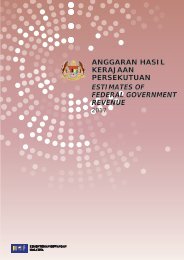WEALTH
2c0esX1
2c0esX1
You also want an ePaper? Increase the reach of your titles
YUMPU automatically turns print PDFs into web optimized ePapers that Google loves.
What lies ahead<br />
for the Chinese<br />
economy?<br />
Insolvencies are<br />
rising and<br />
affecting the<br />
neighbors too<br />
ways to avoid filing for bankruptcy, such as merging or expanding.<br />
Fearing unrest caused by jobs losses, local governments frequently prop<br />
up smaller companies in such industries as steel, concrete and shipping,<br />
with cheap loans. The result is zombie companies that often stay open to<br />
obtain more subsidies.<br />
In real terms, this means that in 2015<br />
and 2016, up to 7,000 companies may be<br />
wiped out, with the sectors construction,<br />
machinery and equipment, and mining<br />
being particularly vulnerable. Technology<br />
and electronics are also precarious, as they<br />
experienced rapid DSO increases in 2015,<br />
while primary industrial commodities are<br />
still struggling against a prolonged global<br />
price collapse.<br />
However, the actual number of corporate<br />
failures in China could be significantly higher.<br />
As insolvency procedures are complicated and<br />
expensive, Chinese enterprises find alternative<br />
ACCOUNTS PAYABLE OUTSTANDING<br />
China is not alone in its woes. Insolvencies are expected to rise this year<br />
by over 15% in neighboring Hong Kong and Singapore, two transport<br />
hubs highly exposed to the global slowdown in trade (exports represent<br />
more than 150% of GDP). All three markets are being hit by the economic<br />
slowdown, but in China the weaker projected growth of 6.5% in 2016 and<br />
6.4% in 2017 is only part of the cause.<br />
The European Union Chamber of Commerce in China recently<br />
highlighted how overcapacity in Chinese industry, fueled by easy<br />
loans and subsidies, is having an “ever more destructive” effect on both<br />
China’s domestic and the global economy. The report, Overcapacity<br />
in China by Roland Berger, shows how overcapacity has grown since<br />
the government unveiled a stimulus package following the 2009<br />
financial crisis.<br />
This is provoking cut-throat competition within China, holding back<br />
the country’s ability to reform, and causing rising trade tension with<br />
other countries. For example, steel production is untethered from real<br />
market conditions and China has more than doubled the combined<br />
production of the next four leading producers. In 2015, China produced<br />
more than half of global cement production.<br />
Allianz • 47



